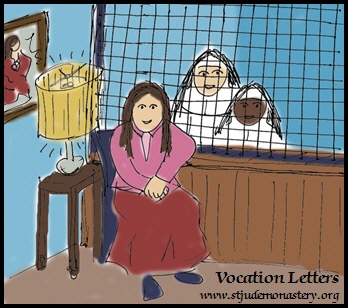Consecration of the Dominican Order to Mary
Today, May 8, we celebrate the feast of the Patronage of the Blessed Virgin Mary over the entire Order of Preachers. “From the events surrounding the beginning of our Order many reasons can be adduced why the Blessed Virgin Mary herself may be considered the special patroness of our Order. From what I have heard with my own ears and from the many accounts in the Lives of the Brethren, it seems that she is our special Mother, bringing forth, advancing and defending the Order whose purpose is to praise, to bless, and to preach her Son.” Thus says Bl. Humbert of Romans in the passage of his Commentary on the Constitutions of the Order of Preachers which we read in this morning’s Office. The following Act of Consecration was originally said on the feast of Our Lady of the Rosary, but it equally suitable for today.

Act of Consecration of the Dominican Order to the Immaculate Heart of Mary
O Queen of the most holy Rosary, Help of Christians, Refuge of the human race, Victress in all God’s battles, we, suppliantly and with great confidence, not in our own merits but solely because of the immense goodness of thy motherly heart, prostrate ourselves before thy throne begging mercy, grace, and timely aid.
To Thee and to thy Immaculate Heart we bind and consecrate ourselves anew, in union with our Holy Mother, the Church, the Mystical Body of Christ. Once again we proclaim Thee the Queen of our Order–the Order which thy son, Dominic, founded to preach the Word of truth everywhere for the salvation of souls; the Order which Thou hast chosen as a beautiful, fragrant, and splendid garden of delights; the Order in which the light of wisdom ought to shine that its members might bestow on others the fruit of their contemplation, not only by courageously uprooting heresy but also by sowing the seeds of virtue everywhere; the Order which during the course of centuries has gloried in thy scapular and in thy most holy Rosary, which daily and in the hour of death devoutly and confidently salutes Thee as advocate in those words most sublime: Hail Holy Queen, Mother of Mercy.
To Thee, O Mary, and to thy Immaculate Heart we consecrate today this religious house, this community, that Thou might be truly its Queen; that perfect observance, the love of thy Son in the Most Holy Sacrament of the Altar, the love of thy praise, and the love of St. Dominic and his virtues might reign here; so that we, thus filled with the spirit of truth, might effectively communicate it to others.
To Thee, O Mary, we consecrate ourselves and those within our care, firmly believing that Thou wilt watch over us in all our tribulations and wilt aid us in fulfilling our sublime Dominican vocation.
O Mother of Mercy, our Mother and Queen of the World, grant that not only we but that all nations, under the guidance of our Supreme Pastor, might proclaim Thee blessed, and together with Thee intone from pole to pole an eternal Magnificat of glory, love, and gratitude to the Sacred Heart of Jesus, in whom alone can be found Life, Truth, and Peace. Amen.
From Analecta Ordinis Fratrum Praedicatorum, vol. XXXI (Oct.-Dec., 1954), PP. 388-89

 Her Story
Her Story









